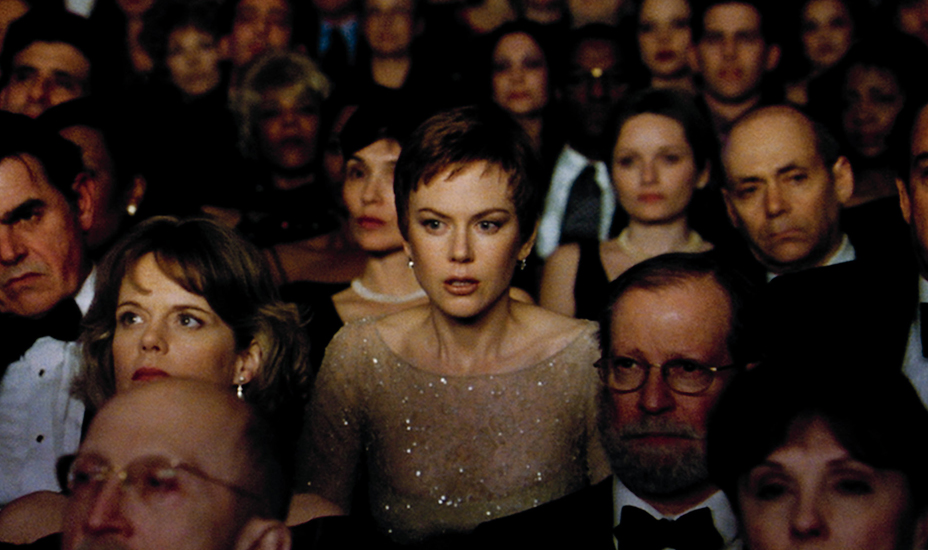Many people slept on Birth upon its release back in 2004, which is a shame because it’s arguably one of the most underrated films of the past 20 years. Jonathan Glazer has only done three features throughout his career (so far) – 2000’s Sexy Beast, 2004’s Birth, and 2013’s Under the Skin. Interestingly enough, Glazer makes his career possible by sustaining himself through music video and commercial productions, putting his cinematic touch on just about every game-changing music video (see Radiohead’s “Karma Police,” “Street Spirit (Fade Out),” and Jamiroquai’s “Virtual Insanity”). Given that it took him ten years to develop Under the Skin due to its numerous rewrites and novelty camera technology, it was Birth that took his career more toward the surreal.
The film follows a widow, Anna (Nicole Kidman), about to remarry when a ten-year-old boy knocks on her door warning her not to marry again, claiming that he’s Sean, Anna’s dead husband. What follows is a downward spiral of her emotional state, as she refutes the boy’s claims even though he knows details about her life that he couldn’t possibly know.
What the film deals with is reincarnation, and how the mind convinces the body of what we think is real. In the film’s first act, she’s reluctant to believe the words of the boy. However, when he starts pointing out details of her family, she becomes entranced in a setting that actually does make her think twice about remarrying, slowly falling under the spell of what she believes is her dead husband.
These secrets revealed by the boy also fester within the family, getting at the roots of their private conflicts and bringing them to light. But just like Kidman in the film, the movie uses techniques to make the viewer believe what they want to believe. Early in the film’s first act, match-cut editing is used between heads of the main cast to give the illusion that one character is blending in with another, also spliced in with footage of a baby being born, solidifying the idea that this film is, in fact, rebirth.
Interestingly enough, these match frames are what motivate the cuts throughout Birth, as the camera constantly shoots through doorways and other frames-within-frames. The staging of the actors in a particular part of the frame match with the staging of the actor in the shot that follows it. This method kind of adds to the theme of reincarnation, by matching bodies in a particular shot to make it look like it’s embodying the body that follows it.

But Birth is a magic trick in itself. The audience is just as baffled and confused as Anna is on screen, keeping us to a limited view of the narrative that runs concurrent with Anna’s discoveries. As Anna learns more about the reincarnation of her dead husband, the audience, too, is sucked deeper into believe that this boy is actually Sean.
The film even shows you exactly what it wants you to look at. In the orchestra scene, there’s a two-minute long stationary shot that zooms in on Anna’s face from afar, showing the exact point the camera wants you to see. It’s a trope used in the film, zoom-ins from shorter to longer focal lengths. The longer lens literally gives the frame a narrower angle of view that blocks out anything outside the frame.
The production design and color palette of the film also exudes the topic of rebirth. Throughout Anna’s apartment, one can see green wallpaper with floral decorations on them. Many of the film’s interior shorts are dressed in warm green, but conflict with the cold outside winter setting. And interestingly enough, in the film’s final wedding sequence that takes place during spring time in the month of May, the color palette of the exteriors are cooler color temperatures. The greens on the bushes and trees seem to be withered rather than flourishing, inciting that the idea of rebirth is actually DoA for Anna. There is no hope for a fresh start, there is no hope for the beginning of new feelings, because a part of her will always be stuck in her head from the past.
But the sound off-screen offers anything but. Alexandre Desplat’s score is centered around Anna’s theme, which is portrayed through a fantastical, almost jack in the box-type sound of xylophones and glockenspiels. It’s used as a vessel to convey Anna’s theme of stasis. She’s stuck in a form of mental amber, still clinging to a past event hoping that she could have a future with her dead husband. It’s as if the score emphasizes a fantastical daydream.
It’s a shame that no one seems to be willing to take a risk on Jonathan Glazer these days. Given that his ambition may seem to stretch the boundaries of what is possible on film, he may be our only hope for this decade to push the envelope of what films can be capable of. A few months ago, A24 announced they’ll be reteaming with Glazer for a holocaust drama loosely based off of Martin Amis’s novel The Zone of Interest. Let’s just hope it won’t take another decade for us to see another Jonathan Glazer feature.
